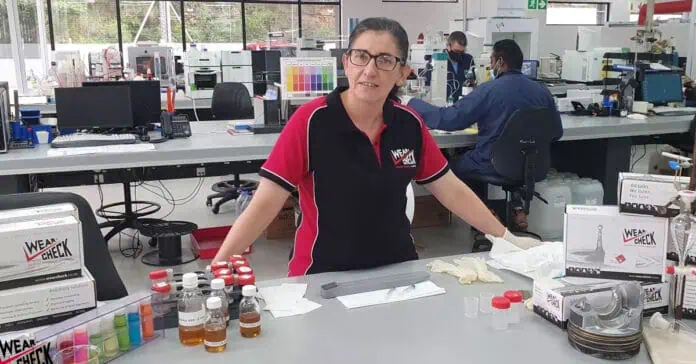Condition monitoring specialist company, WearCheck, has launched a lube kitchen
series, created by Steven Lumley, technical manager at the company. In it, she
explores the world of lubricant additives, detailing their function, how they work and
their application. Part 1 focuses on the classification of lubricants.

combination of base oils and additives. The blending of a lubricant is a complex
process that entails complex chemistry in the lube kitchen.
A fully formulated lubricant can have many functions, but they generally fall into five
fundamental groups. Lubricants are used to reduce friction and wear, dissipate heat
from critical machine components, remove and suspend deposits that may affect
performance, protect metal surfaces from degradation and corrosion as well as act
as a structural material.
Lubricants serve a diverse range of applications, everything from your car’s engine
to the water pumps at a nuclear power station to even the bobbin case of a small
sewing machine, with each requiring a different combination of base oils and
additives.
The blending of a lubricant is a complex process that requires a high degree of
engineering and some pretty complex chemistry in the lube kitchen, as formulating
lubricants requires an in-depth understanding of the chemical qualities of everything
that goes into the mix and how those chemicals interact – quite a balancing act, when
you think about it!
Base oils themselves perform most of the functions of lubricants, but they can only
do part of the job. Additives are needed when a lubricant’s base oil doesn’t provide
all the properties the application requires. They are used to improve the good
properties of the base oils and minimise the bad. Typical lubricants are composed of
a base oil, an additive package and, optionally, a viscosity index (VI) improver.
Lubricant additives are organic or inorganic compounds dissolved or suspended in
oil.
Not all lubricants contain the same combination of additives and certainly not in the
same treat rates. Additive concentrations can range between 0.1% to 30% of the oil
volume, depending on the application. For example, turbine, hydraulic and industrial
gear lubricants demand much lower treat rates of additive packages compared to automotive gears, transmissions, and petrol and diesel engines, which are the most
demanding and require the most additives.
There are many lubricant additives available, and they are selected for use based
upon their ability to perform their intended function. They are also chosen for their
ability to mix easily with the selected base oils, to be compatible with other additives
in the formulation and to be cost effective.
Added to this, the geometry and metallurgy of the components, the operating
temperatures, load, potential exposure to contaminants, combustion products as well
as typical drain intervals are also taken into consideration when selecting the ideal
cocktail of additives for a specific application.
Ultimately the optimal combination of base oils and additives allows the finished
lubricant to meet specified properties and performance characteristics outlined by
OEMs and lubricant standards organisations.
For further information, please visit www.wearcheck.co.za, call head office on
+27 31700-5460 or email marketing@wearcheck.co.za.
